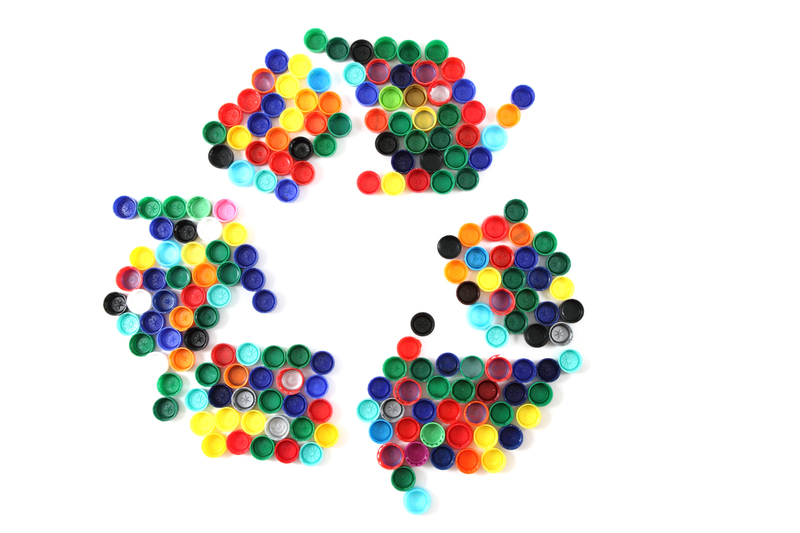Strategies to Cut Household Waste Wisely: A Comprehensive Guide
Household waste is a pressing environmental concern, rapidly filling landfills and contributing to pollution worldwide. The journey toward a sustainable lifestyle often begins at home, and by implementing smart strategies to reduce household waste, every family can make a tangible difference. This article serves as your ultimate guide, providing effective and practical approaches to cutting household waste wisely. Adopt these methods and watch your ecological footprint shrink, while saving money and supporting a healthier planet.
Why Reducing Household Waste is Crucial
- Protects the environment: Less waste leads to fewer landfills, reduced emissions, and minimized resource depletion.
- Saves money: Smart waste strategies often reduce expenditures on unnecessary purchases and disposal fees.
- Supports communities: Lower waste means cleaner neighborhoods and less strain on municipal services.
Understanding Different Types of Household Waste
Before implementing waste reduction strategies, it's important to recognize the various kinds of waste we generate at home:
- Organic Waste: Includes food scraps, yard trimmings, and biodegradable materials.
- Plastics: Containers, packaging, bags, and other consumer products made from plastic.
- Paper and Cardboard: Newspapers, packaging, mail, and boxes.
- Glass and Metals: Beverage containers, cookware, cans, and other metal goods.
- Hazardous Waste: Batteries, chemicals, electronics, and medicines.
- Textiles: Clothing, linens, and fabric materials.

Smart Strategies to Cut Household Waste Effectively
1. Embrace the "Reduce, Reuse, Recycle" Philosophy
Reduce, Reuse, Recycle is more than a catchphrase--it's a proven framework for minimizing household waste. Here's how you can apply each principle wisely:
- Reduce: Buy only what you need, opt for products with minimal packaging, and avoid single-use items.
- Reuse: Repurpose containers, bags, and jars. Donate gently used clothes and household goods instead of discarding.
- Recycle: Sort recyclables properly, learn your local guidelines, and recycle paper, cardboard, certain plastics, glass, and metals.
Tip: Place clearly labeled bins in your home to encourage proper sorting and recycling habits.
2. Optimize Your Kitchen Wastes
The kitchen is a major source of household trash, but you can dramatically cut waste by following these strategies:
- Plan Meals: Create a weekly meal plan and shopping list to prevent unnecessary buys and food spoilage.
- Practice FIFO: *First In, First Out*--use older groceries first to ensure nothing goes bad.
- Compost Organic Scraps: Set up a compost bin for fruit and vegetable peels, coffee grounds, and eggshells. Composting reduces landfill contributions and provides valuable nutrients for your garden.
- Use Leftovers Creatively: Reinvent last night's dinner into a new meal or freeze portions for future use.
- Buy in Bulk: Purchase pantry staples in larger quantities to minimize packaging waste, and use reusable containers at bulk stores if available.
3. Cut Down on Single-Use Plastics
Plastics can take centuries to decompose, making them a top priority in any household waste reduction plan. Actively replace single-use plastics with durable alternatives:
- Bring Your Own Bags: Use cloth or sturdy reusable bags for shopping.
- Switch to Refillables: Choose products like water bottles, coffee cups, and food containers designed for reuse.
- Avoid Packaged Goods: Select fresh produce and bulk items without extra wrapping, or look for compostable materials.
- Select Sustainable Brands: Many companies now offer products with eco-friendly packaging or refill systems.
4. Responsible Disposal of Electronic and Hazardous Waste
Electronics and hazardous products pose environmental risks if not discarded responsibly. Here's how to manage them:
- Recycle Electronics: Take old devices to certified e-waste recyclers, and never toss electronics in the trash.
- Proper Medication Disposal: Return expired or unused medicines to pharmacy take-back programs.
- Handle Chemicals Safely: Use up household cleaners, paints, and batteries, and research local hazardous waste collection events.
Pro tip: Store hazardous items safely until you can access appropriate disposal facilities.
5. Reduce Paper and Packaging Waste
- Go Digital: Opt out of paper bills, catalogs, and junk mail. Use email and apps for receipts, reminders, and statements.
- Rethink Packaging: Select products with minimal or recyclable packaging, and bring your own containers to shops that allow it.
- Reuse and Repurpose: Use old papers and boxes for crafts, wrapping, or protective packaging at home.
6. Sustainable Shopping Habits
Your shopping choices directly impact the trash your household generates.
- Buy Long-lasting Products: Choose quality items that stand the test of time, even if they cost a bit more upfront.
- Avoid Impulse Purchases: Think twice before buying things you may not use fully.
- Support Secondhand: Purchase pre-owned goods, or swap with friends and neighbors.
- Research Brands: Choose companies with transparent sustainability practices.
7. Composting: Turning Waste into Resource
Composting is an eco-friendly method to dispose of kitchen and garden waste. Here's how to get started:
- Choose a Compost Bin: Use a backyard pile, tumbler, or indoor bin depending on your space.
- Add Suitable Materials: Include fruit and vegetable scraps, coffee grounds, eggshells, grass clippings, and leaves. Avoid meat, dairy, and oils.
- Maintain Balance: Keep a healthy mix of "greens" (wet materials) and "browns" (dry, carbon-rich materials) for efficient decomposition.
- Harvest Compost: Finished compost can enrich soil in potted plants and gardens.
By composting, you not only reduce household waste but also return valuable nutrients to the environment.
8. Invest in Reusables and Durable Goods
- Reusable Shopping Bags: Use for all types of shopping, not just groceries.
- Water Bottles and Coffee Cups: Stainless steel or BPA-free bottles eliminate thousands of plastic bottle waste per year.
- Beeswax Wraps and Silicone Lids: Replaces single-use plastic wrap for food storage.
- Rechargeable Batteries: Save money and significantly cut electronic waste in the long term.
9. Donating and Recycling Textiles
Clothes and linens shouldn't end up in the trash. Here's a wise approach:
- Donate Usable Items: Local charities, thrift shops, and shelters accept clean, wearable clothing.
- Repurpose: Old towels and clothes can become cleaning rags or be crafted into new items.
- Recycle Unusable Textiles: Some community programs and retailers offer textile recycling for torn and stained fabrics.
10. Start a Waste Audit
To ensure progress on your household waste reduction journey, perform a waste audit:
- Track Waste for a Week: Categorize all trash and recycling you generate.
- Identify Key Contributors: Find out which items make up the bulk of your garbage.
- Set Reduction Goals: Target problematic waste streams and set measurable goals (e.g., reducing plastic packaging by 50%).
- Involve the Family: Share findings, and encourage input and accountability from everyone in your household.
Practical Tips: Making Household Waste Reduction a Habit
- Keep a Zero-Waste Kit: Carry essentials like reusable bags, containers, and utensils when out and about.
- Buy Local: Shop at farmers' markets and local stores that favor minimal packaging.
- Repair Before Replacing: Fix broken gadgets, clothes, and furniture.
- Organize Regular Clean-Outs: Prevent clutter and evaluate which items to keep, donate, recycle, or discard responsibly.
- Stay Informed: Follow updates on recycling guidelines and sustainable products.
Getting Kids Involved in Waste Reduction
Teaching children about cutting household waste wisely plants the seeds of conscious living. Here are some ways to involve them:
- Fun Challenges: Host family contests to find who can create the least trash in a week.
- Create DIY Projects: Make crafts from recyclables and unused items.
- Composting Lessons: Let children help with composting and teach them about soil health and plant growth.
- Educational Discussions: Explain why waste reduction matters, using age-appropriate language and examples.

Common Myths About Reducing Household Waste
- "My efforts won't make a difference."
Every small change adds up! Collective household action is impactful. - "Going zero waste is expensive."
Most waste-cutting strategies save money by promoting thoughtful consumption and reuse. - "It takes too much time."
Once habits are formed, reducing waste becomes second nature--often saving you time in the long run.
Conclusion: The Benefits of Living Waste-Wisely
By embracing these strategies to cut household waste wisely, you contribute to a more sustainable world while enjoying a cleaner, less cluttered home and saving money. Remember, it isn't about perfection. Make one change at a time and celebrate your milestones. Involve your household, share your knowledge, and inspire your community. The planet and future generations will thank you for your conscious choices.
Start today--audit your waste, choose a few simple strategies, and take your first step toward a wise, waste-free household!